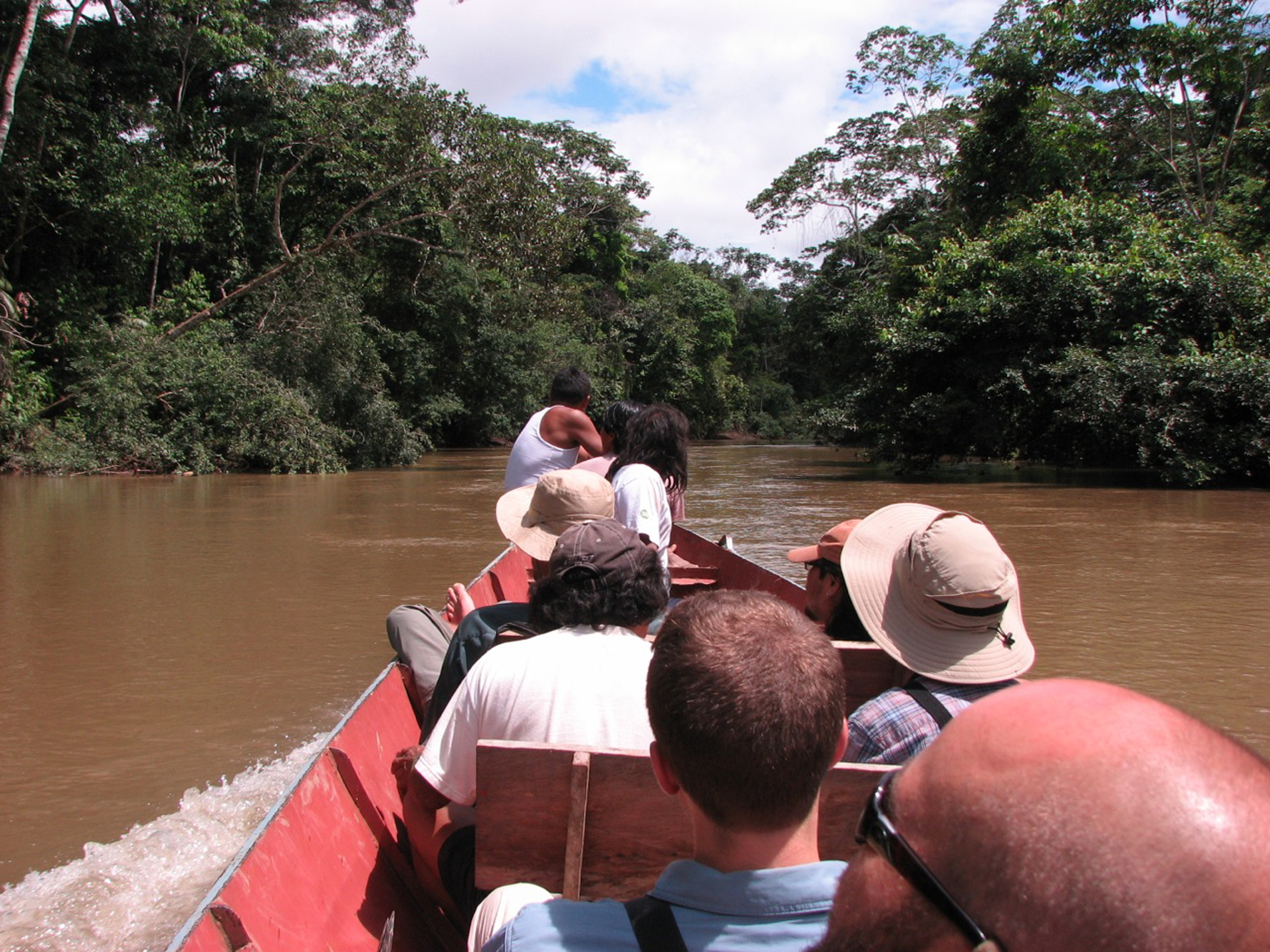Undergraduate researchers study poison dart frogs and more in Ecuadorian jungle

Poison dart frogs, jaguars, and the rare, gray-bellied hawk were just a few creatures studied by Virginia Tech undergraduate students this summer, as part of the university’s Tropical Biology and Conservation course.
Taught by Ignacio Moore, associate professor of biological sciences in the College of Science, and Bill Hopkins, associate professor of wildlife conservation in the College of Natural Resources and Environment, the course included a study abroad trip to Ecuador, where students conducted the research projects they developed in Blacksburg.
“Each project was based on a general question,” Moore said. “We gave them free rein to choose projects that excite them.”
Using frog models ranging from brown to bright red, one project looked at predation on poison dart frogs at different elevations. Students working on the project were Meredith Swartwout of Troutville, Va., a junior majoring in biological sciences in the College of Science, Jeronimo Silva of Sao Paulo, Brazil, a senior majoring in wildlife science in the College of Natural Resources and Environment, and Alex Garretson of Rockville Md., a junior majoring in wildlife science in the College of Natural Resources and Environment.
Silva and Garretson were also participants in Fralin Life Science Institute’s Summer Undergraduate Research Fellowship program this summer.
They found that 86 percent of predation attempts were from arthropods, and that, “at the lowest elevation, where poison dart frogs were prevalent, the brown clay models shaped like poison dart frogs received the most predation,” Swartwout said. “But as elevation increased, the bright colors of the experimental frog models no longer served as a deterrent to predators.”
Other projects included camera trapping of wildlife around the field stations, by Lauren McPherson of Woodbridge, Va.,a 2012 wildlife science graduate.
“Her most amazing photograph was a jaguar only 600 feet from the station, something even the station manager had never seen,” Moore said.
Kim Melnyk of Haymarket, Va., a 2012 biological sciences graduate in the College of Science, witnessed a rare gray-bellied hawk eating a ground dwelling bird called a tinamou.
“There are barely any documented sightings of this species of hawk feeding, and not much is published on its feeding behavior,” Melnyk said. “Dr. Moore, Dr. Hopkins, and I are working on writing a natural history note on the sighting and possibly having the note published.”
Katy Battle of Richmond, Va., a junior majoring in wildlife science in the College of Natural Resources and Environment, investigated species richness across the elevational gradient of Ecuador.
“With the help of the professors and other students, I was able to record a master list of all species detected at the four different elevational study sites we visited during the course,” Battle said. “Species diversity and richness studies are important towards the implementation of effective conservation strategies for threatened ‘biodiversity hotspots’ such as the neotropics.”
For the course, students met during the spring semester to study wildlife biology relevant to Ecuador, as well as the socio-political history of the country in terms of conservation efforts. Then, each student designed and implemented a full-scale research project by researching and developing a question, writing a proposal and protocol, conducting the field research (in Ecuador), and writing a final paper detailing results and findings.
In Ecuador, the group visited four field sites: a lowland Amazon rainforest (1,000 foot elevation), two cloud forests (4,500 foot and 7,000 foot elevations), and a high elevation paramo grassland (11,000 foot elevation). The group used native guides as well as Rudolph Gelis, owner of Pluma Verde Tours. Each site had unique environments and wildlife and offered different student research opportunities.
“For many of the students, studying abroad in Ecuador was truly a transformative educational experience,” Hopkins said. “Complete immersion in such a remote region and interacting with native people under primitive conditions provides a perspective that our undergraduates simply cannot obtain in the classroom. Witnessing the amazed expressions and emotions of students as we walked through the jungle is one of the most rewarding things I have ever experienced as an educator.”
While the course is open to students of any major, the requirements are intense, and include significant background reading, writing of a 20-page paper, critical thinking skills, and the physical fitness necessary for hiking each day, all day, in the Ecuadorean forests with primitive accommodations at night. Students are graded on how successfully their projects were executed, as well as how successfully they can communicate research goals and results.
Moore began offering the trip in 2006, as part of the educational component for an NSF Career grant. It grew in popularity and competitiveness. With the grant now completed, Moore and Hopkins, who are both affiliated faculty members with the Fralin Life Science Institute, are seeking new funding sources for future trips, as the total cost of tuition and travel now falls to students.
“This is not a tourism trip, you have to do a lot of work. But we also have a lot of fun and see lots of amazing things!” Moore said.
Students interested in taking the course should contact Ignacio Moore.




